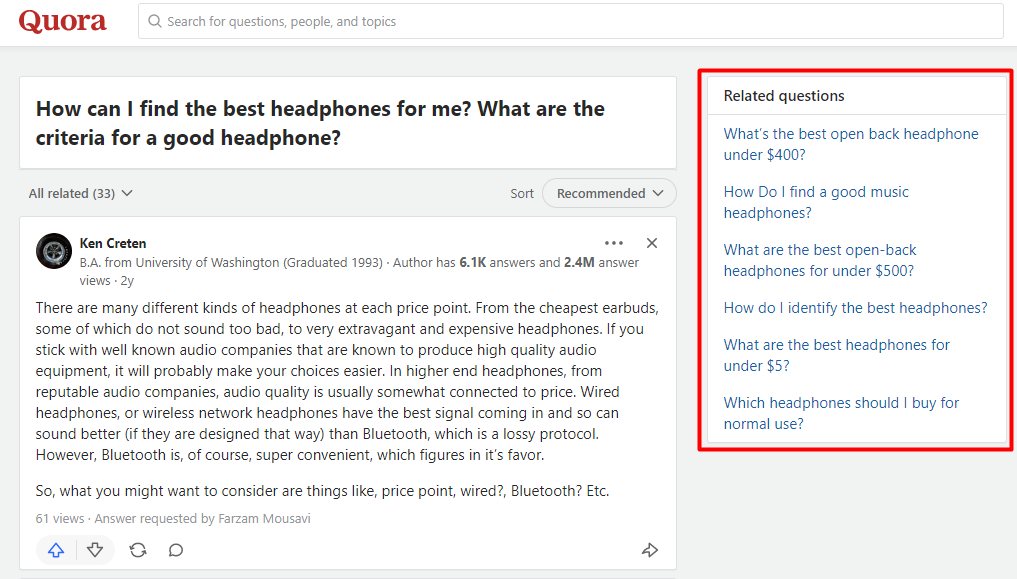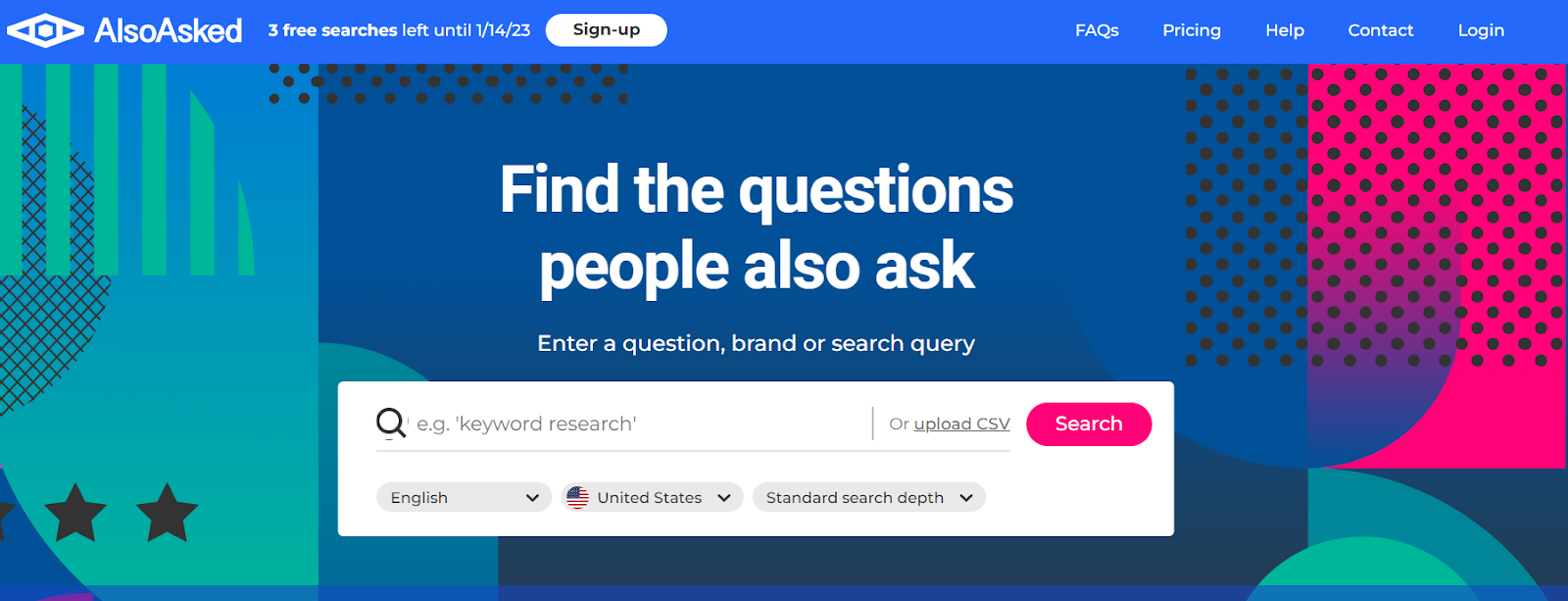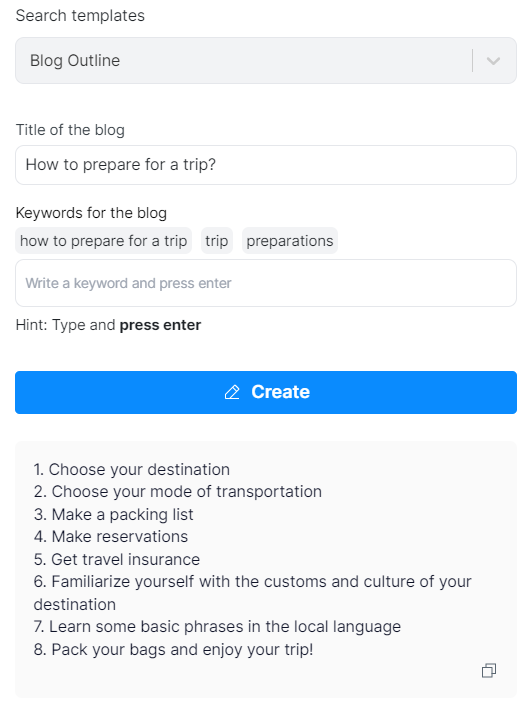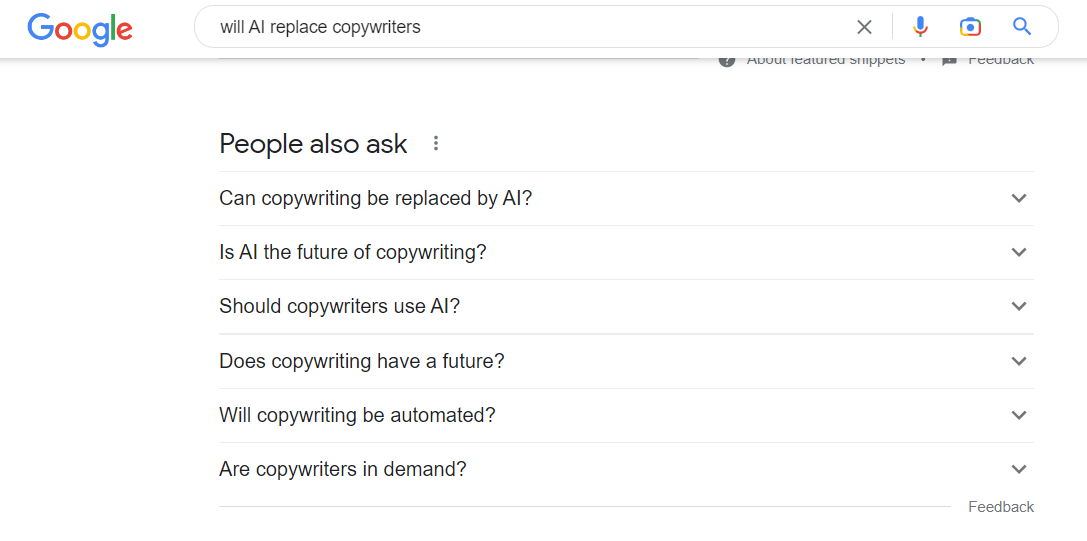Have you ever wondered how to create compelling content for your website without investing countless hours in research?
We get this question frequently from business owners who worry they don't have time to maintain their own websites.
If you're in a position to hire a professional copywriter, you might think there's no point in spending time writing blog posts and articles on your own.

However, developing exciting material to share with the world is easier than you think.
In this article, you'll find out 7 steps on how to create effective website content that is interesting, useful, and motivates people to take action.
Furthermore, these practices will cover everything a website owner needs to do to produce enticing content and maintain a steady stream of visitors.
Let's start!
What Makes a Good Website Content?
Let's look at what makes good website content before diving into the specifics of how to make it.
Compelling content is:
🎯 Simple and concise — Everything on your site should be well-written and simple to understand. You shouldn’t get too technical or use unnecessary jargon.
🎯 Pertinent information — Keep the information on your site up-to-date and relevant. As a result, site visitors will be more interested and likely to return for more.
🎯 High-quality visuals — High-quality images can pique a viewer's interest and break up walls of text, both of which can be off-putting. Include high-quality media files (photos, videos, illustrations) that pertain to the subject matter.
🎯 Well-organized navigation — Visitors can easily locate their desired information if the site's navigation is well structured. Help your site's visitors find their way around with a simple menu, breadcrumbs, and search bar.
🎯 Responsive design — If you want your website to be accessible on any device with any screen size, you should use a responsive layout. It simplifies the user experience for both reading and interacting with your content.
Let's find out how to get high-quality content for your website that will increase organic traffic and keep your readers interested in what you have to say.
7 Steps On How to Create Effective Website Content?
1. Think About the End User — Who Are You Writing Your Content For?
Before you start writing, it’s important to understand your target audience and their needs.
1. Research Your Target Audience
Understanding your audience and what content will appeal to them requires thorough audience research.
Consider the topics they discuss, the foods they consume, and their interests and needs.

For instance, Quora, Reddit, LinkedIn Groups and even Google search itself are just some of the platforms that can help you research the interests of your targeted audience.
2. Ask Questions
Find out what your audience would like to see or hear more of. Send surveys, post inquiries on social media, or even arrange in-person interviews.
3. Leverage the Audience’s Feedback
Listen to your audience and be open to feedback. Pay attention to their reactions and responses to your content to see what resonates with them and what doesn’t.
Utilizing a section for comments and sharing, for example, is always a good idea at the end of an article.
This will enable discussion on the subject you write about at the conclusion of your article from your readers. Pretty convenient, right?
4. Analyze Your Information
In order to better meet the needs of your audience, you should analyze the information you have collected about them.
Examine audience characteristics such as age range, gender, location, and purchasing and engagement patterns to better tailor your content to your target market.
If you don’t know where to start , you can utilize free tools such as People Also Ask to get real-time and geo-specific insight into specific search intent.

2. Establish Your Objectives — What Do You Want to Accomplish With Your Content?
Staying focused and producing content that meets the needs of your audience is vital to establish clear goals for your website.
Knowing your destination before setting out on your journey with content is crucial.
Think about the impact you want your content to have and the goals you want to accomplish when creating it.
For instance, the SMART framework is an excellent way to start outlining your goals.
What are SMART Goals?
SMART framework stands for specific, measurable, attainable, relevant, and time-bound. In simple words, your goals must be:
S = Specific - Why do you want to achieve such a goal?
M = Measurable — What are the accomplishment parameters?
A = Achievable — Is it achievable?
R = Relevant — Is it your ideal outcome?
T = Time-bound — When do you expect to complete it?
With this type of strategy in your content creation process, you can zero in on your goals, establish benchmarks for success, and avoid getting off track.
3. Create a Roadmap — Can Readers Easily Navigate Your Content?
Once you’ve determined the topics you want to cover and the goals you want to accomplish, create an outline to organize your thoughts and make your readers' journey more digestible.
1. Brainstorm Your Topic
To write effectively, you must first have a firm grasp of your intended message. Just write down everything you can think of related to your topic.
Hubspot's conversion funnel, for instance, is an excellent method for structuring the elements of your niche.
Prioritize the most pressing issues, which you can build into more granular subtopics.
By providing comprehensive coverage, you'll quickly establish yourself as an expert on the subject at hand and keep your readers interested and involved.
2. Choose Main Takeaways
It will likely happen that you won't be able to cover everything in a single piece of content.
You can pick subtopics that are directly related to your thesis to hone in on just the right amount of detail for your paper.
Using these key points, create an outline of what you want to include in each chapter.
They can serve as your outline's first draft.
Pro Tip: AI writing tools such as TextCortex can help you quickly get outlines based on your keywords and the topic of your content.
The “Blog outline” feature is available as part of the TextCortex Chrome extension. To use it, click on the logo and navigate to the “Blogging” section.
Once you fill in the title and the keywords you want to include for the outlines, hit the “Create” button.

Besides this feature, the TextCortex add-on enables you to get various content forms for your website from 60+ AI templates.
Now you have successfully created a skeleton of what you want to cover with your topic. And what about the meat?
4. Write Engaging Content
Does Your Content Have the Right “Ingredients” to Make an Impact?
The key to content engagement is giving your readers something they can use. And, in most cases, your audience is in a search for a solution to their pain point.
Therefore, to cover the “problem” (topic) properly, you should aim for the following elements when preparing the “meat” of your content:
✏️Make it all about your audience — Your content needs to serve your audience's interests.
✏️Keep it fresh — Mixing topics and formats keeps your content interesting.
✏️Use visuals — Visuals attract and engage readers.
✏️Use storytelling — Tell a story to make your point more vividly and permanently.
✏️Ask questions — Get people involved with your content by asking them questions.
✏️Use humor — Sprinkle some humor to make your content more entertaining.
✏️Use multimedia — Use videos and podcasts to create a dynamic and exciting experience for your audience.
✏️Invite feedback — By inviting feedback, you can learn what your readers think of the info and incorporate their suggestions into later tweaks.
If you want more specific tips on improving your content, read our article "How to make your writing more engaging".
Pro Tip: You can also use TextCortex rewriting add-on to create more compelling content by rewriting the original text for more compelling context.
Select the sentences or paragraphs you want to modify and choose the “Rewrite” feature.
And that's not all. The “Tone” feature enables you to experiment with various tones to convey your content's intended meaning.
If we want our engaging content to reach the right audience, we must ensure that it is optimized for relevant keywords.
To make this happen, make sure to take the basic requirements for SEO optimization of your website content.
5. Optimize Content for Search Engines — Is Your Content Google-friendly?
It is no secret that manual keyword research is a nearly impossible task.
Not because you can’t do it, but because it takes a lot of calculation and data analysis to have the right set for the queries you want to target.
Here is the list of essential steps to take when optimizing your website content for SEO.
1. Identify the Right Keywords
The best way to find keywords is to determine the terms and phrases people use to search for content online.

Then, use those terms in your content to help search engines recognize your content as the most reliable answer to that specific query.
2. Optimize Title Tags and Meta Descriptions
Search engine optimization relies heavily on title tags and meta descriptions.
Incorporate your primary keywords and write a captivating, clickable description for each page.
4. Include Outbound Links
Linking out to other relevant websites and sources can help boost your search engine rankings.
You can accomplish this by providing in-text links to external resources such as encyclopedias, dictionaries, and databases that contain the statistics, facts, and quotations you reference.
5. Optimize Images
Using keywords for image optimization increases the likelihood that search engine crawlers will correctly interpret an image's content.
Relevant keywords in your images and alt text can improve the chances of your images appearing in image search results when people use your target keywords.
6. Improve Site Speed
Site speed is an important factor for search engine rankings, so make sure to optimize your website to be more responsive.
The more responsive it is, the better SEO performance your website will have.
Most professional writers use SEO tools to find the most effective keywords to sprinkle throughout their writing.
Check our article about the top 12 free SEO extension tools to take a peek.
6. Proofread — Is Your Content Error-Free?
Before submitting it for publication, proofread your work for typos, grammatical errors, and factual inaccuracies.
📌Read the content aloud — This way, you can catch any errors you missed while reading silently.
📌Read the content backward — Work from the last sentence to the first. This can catch spelling and grammar errors.
📌Look for common errors — Check spelling, typos, punctuation, and repeated words.
📌Have a friend or colleague review the content — A fresh set of eyes can spot errors you missed.
📌Use a grammar and spell checker — Many online proofreading tools exist to help you avoid writing errors.
People avoid content that has typos and grammatical errors because it is seen as laziness and because it can make the reader doubt the author's credibility.
7. Publish and Promote — Content Is Ready For Launching
Once your content is complete, you can share it with the world. However, promotion must be spread across multiple channels to get a desirable organic boost.
You can use paid advertising, social media promotion, and email marketing to get the word out.
For example, you can repurpose your existing blog post on platforms such as Facebook and Instagram and initiate communication with people interested in your niche.

This way you can increase your audience reach, and expand the net of the targeted audience.
Pro Tip: The TextCortex add-on also enables you to AI-generate social media updates directly on the platform you want to post.
The procedure is rather straightforward: simply write the concept of 5 words, highlight them, and click on the “Long-form post” feature to create up to 300-words post.
Likewise, you can use the TextCortex extension to summarize the portion of the text to get a brief social media post.
5. Track Your Progress and Adjust
Once you’ve published and promoted your content, you need to track your progress and adjust as necessary.
Analyze your efforts' results and determine whether they need adjustment to get full capacity and provide even better results.
Google Analytics is the go-to free service that can help you grasp metrics like traffic sources, user behavior, page views, average time on page, bounce rate, and more.
Keep in mind that it will take time to establish yourself as an authority in your field on social media, so persistence and dedication are essential.
How to Create Effective Website Content With TextCortex
Your genuine enthusiasm for writing and your determination to succeed are at the essence of a compelling content practice.
If you have that, all the ups and downs of this journey are manageable.
We still hope that this ultimate guide on how to create effective website content will simplify your work and help your efforts receive the attention they deserve.
And why not kick things off with TextCortex extension assistance?
TextCortex provides you with:
- General templates for rewriting, tone changing, answer to the question, etc.
- Ready-to-send cold emails, general emails, subject lines, etc.
- Advertisement copies for various platforms
- Social media content for Facebook, Instagram, LinkedIn
- AI-generated content for landing page and website copy
- Product titles and descriptions for e-commerce
- And more.
Using it you’ll be able to:
- Reduce writing time by 70%
- Produce any content type at scale by leveraging 60+ AI templates
- Provide AI assistance on 30+ popular online platforms
- Cost you $0 to start using it
Interested to test it out?
Get your TextCortex free account to claim your 10 free daily creations which give you access to 60+ AI templates and 9+ rewriting features, to boost your content right away.
FAQ
What are The Top 5 Pillars of Content?
1. Quality — Ensure that the content is of the highest quality and accuracy.
2. Consistency — Develop a consistent look, feel, and message throughout all content.
3. Relevance — Make sure the content is relevant to the topic and audience.
4. Engagement — Write content that encourages viewers to engage with it.
5. Promotion — Use multiple strategies to promote content, including social media, SEO, and email marketing.
Keep Learning
9 Tips For Effective Storytelling - How To Write An Engaging Content
7 Tips To Reduce Bounce Rate on Blog And Increase Conversions in 2023

![7 Steps for Creating Effective Website Content [Definitive Guide]](https://textcortex.com/cdn-cgi/image/format=avif,quality=90/https://assets-global.website-files.com/622611a2b23d0e6b270fba81/63c212711e2609275948be8b_how-to-create-effective-website-content.png)


